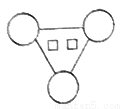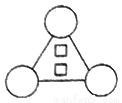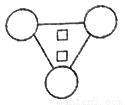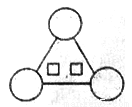题目内容
Once upon a time,there was a very big fish named Bob. Bob was already the ______ fish in the pond,but he wanted to be the biggest fish in the world.
One day,he was out catching ______ for dinner. He ______ to catch a very big fly. Before he could swallow it through,the big fly ______ for his life. The fly promised Bob a magic wish if he would ______ his life.
At first,Bob was very ______ about giving up the largest fly he had seen. He was hungry.______ more than anything else on this planet,he wanted to be huge.
______ he decided to take the magic wish. The fly looked at him and said,“______ your wish,fish!”
“I want to be huge,really,really huge. I want to be bigger than any ______ that ever lived,” Bob said to the fly.
“That’s really ______,” the fly said to him.
Bob looked at the fly and said,“No,I’m smart!Aren’t you going to give me the ______?”
“I will keep my promise,”the fly said,and with that Bob started to ______. He grew and grew until he was so large that he ______ live in the pond any more. Bob ______ for water,but he was beached,and after a while he died.
The people fishing in their ______,the people standing on the banks of the ______,and the people who had stopped their cars on the highway,all ______ in surprise at this big stupid fish that was ______ on the side of the pond.
Everybody had a wonderful time ______ Bob,who was of course eaten.
1.A. tallest B. cleverest C. shyest D. largest
2.A. flies B. fish C. animals D. birds
3.A. promised B. succeeded C. managed D. tried
4.A. searched B. begged C. waited D. struggled
5.A. protect B. rescue C. spare D. keep
6.A. sure B. uncertain C. worried D. pleased
7.A. And B. While C. Until D. But
8.A. Finally B. Firstly C. Surprisingly D. Doubtfully
9.A. Name B. Remember C. Tell D. Leave
10.A. animal B. fly C. person D. fish
11.A. funny B. stupid C. sincere D. royal
12.A. present B. wish C. hope D. gift
13.A. grow B. change C. increase D. add
14.A. mustn’t B. wouldn’t C. couldn’t D. shouldn’t
15.A. longed B. sent C. charged D. paid
16.A. seas B. nets C. boats D. cars
17.A. water B. stream C. river D. pond
18.A. wondered B. watched C. glared D. stared
19.A. swum B. stuck C. shocked D. struck
20.A. beside B. besides C. except D. as well as


 B.
B. 
 D.
D. 